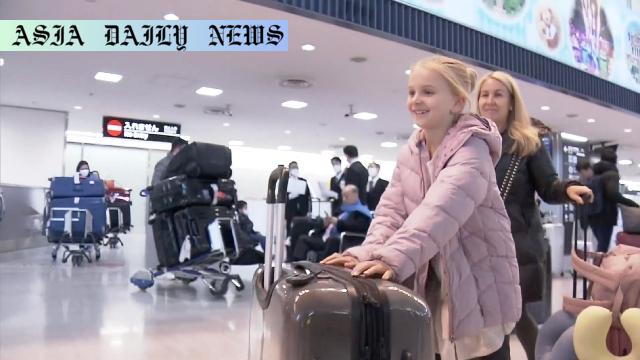Congestion: A government survey finds visitors to Japan troubled by tourist spot overloads, immigration delays, and communication issues.
Congestion at tourist spots is a common issue for visitors to Japan, highlighted by 13% of survey respondents.
Immigration procedures, particularly long wait times, created challenges for 8.6% of the surveyed travelers.
Nearly 22% reported difficulties finding trash cans, a surprising and recurring issue.
Efforts to improve communication with staff have shown results, lowering complaints.

Survey Highlights Issues in Japan’s Tourism Sector
Japan remains one of the most popular tourist destinations in the world, offering a rich cultural tapestry, historic landmarks, and renowned gastronomy. However, a recent government survey conducted by the Japan Tourism Agency has revealed a set of persistent issues faced by foreign visitors, including excessive congestion at tourist hotspots and prolonged wait times during immigration procedures.
The survey captured responses from over 4,000 international travelers, with participants asked to outline the challenges they encountered during their visits. A notable finding was that congestion at tourist locations was reported by 13% of travelers. Iconic sites like Kyoto’s Fushimi Inari Shrine or Tokyo’s bustling Shibuya Crossing often attract massive crowds, leading to logistical challenges and diminished enjoyment.
Immigration Procedures Pose Challenges
Another area of concern revolved around immigration, cited by 8.6% of visitors as a frustration. This reflects a doubling of dissatisfaction compared to the agency’s previous survey. Visitors noted extended wait times at airports, which can be particularly taxing for international tourists after long-haul flights. Japan’s high influx of tourists alongside meticulous border controls has intensified these delays. Efficient immigration handling is crucial if the country aims to sustainably manage its burgeoning tourism sector.
Trash Disposal and Communication Improvements
Adding to the list of issues, 22% of respondents reported difficulties locating trash cans. While this may seem minor, it underscores a broader need for clear and accessible public services to cater to global visitors unfamiliar with Japan’s practices. Encouragingly though, the survey highlighted positive progress in communication. Complaints about difficulties engaging with local staff have decreased, a testament to initiatives aimed at improving multilingual signage and employee training in hospitality venues.
A Mixed Bag of Results
Despite these identified challenges, the survey yielded optimistic insights as well. Over half of the travelers reported no problems, marking a 21-point improvement over prior results. This improvement stems from sustained efforts by government and private entities to refine the tourist experience throughout Japan. However, officials remain aware of emerging challenges and are calling for enhanced collaboration among government bodies to rectify these issues while maintaining Japan’s stellar image as a tourist-friendly nation.
Conclusion
In conclusion, while Japan continues to captivate tourists worldwide, the Japan Tourism Agency’s findings spotlight issues that require attention. Addressing these concerns — be it congested locations, immigration wait times, or public resource availability — will sustain and even enhance Japan’s appeal on the global stage. For a country striving to achieve a seamless blend of traditional allure and modern convenience, adapting to shifting tourist expectations is crucial in shaping its tourism legacy.



Commentary
The Beauty and Challenges of Japan’s Tourism
Japan’s allure as a traveler’s paradise is unquestionable. Rich with a unique blend of history, culture, and innovation, the country holds immense appeal for millions of travelers each year. However, the recent government survey sheds light on hurdles that, if neglected, could slightly tarnish its stellar reputation as a destination of choice.
Understanding Tourist Pain Points
The concern over overcrowded tourist spots resonates with many global destinations, especially after the post-pandemic boom in travel. While managing the innate charm and popularity of iconic landmarks like Mount Fuji or Osaka Castle is challenging, strategic crowd management can go a long way in enhancing the experience. Measures such as timed-entry tickets, expanded public areas, or alternative itineraries could alleviate congestion without compromising accessibility or the essence of these historic locations.
Improvements are Key to Sustainability
Equally significant is the issue of immigration procedures. Long queues and delays can turn an otherwise perfect trip into a moment of frustration, especially for tourists arriving from far-off continents. Simplifying processes through e-visas, biometric fast-tracking, and multilingual assistance booths could significantly improve the first impressions and accessibility of the country for newcomers.
Ultimately, these sustained efforts in improving communication, increasing multilingual options, and refining the overall visitor experience will ensure Japan remains a beacon of cultural immersion and tourist satisfaction. The survey serves not just as a diagnostic tool but as a roadmap prompting necessary action to shape an even brighter future for Japanese tourism.